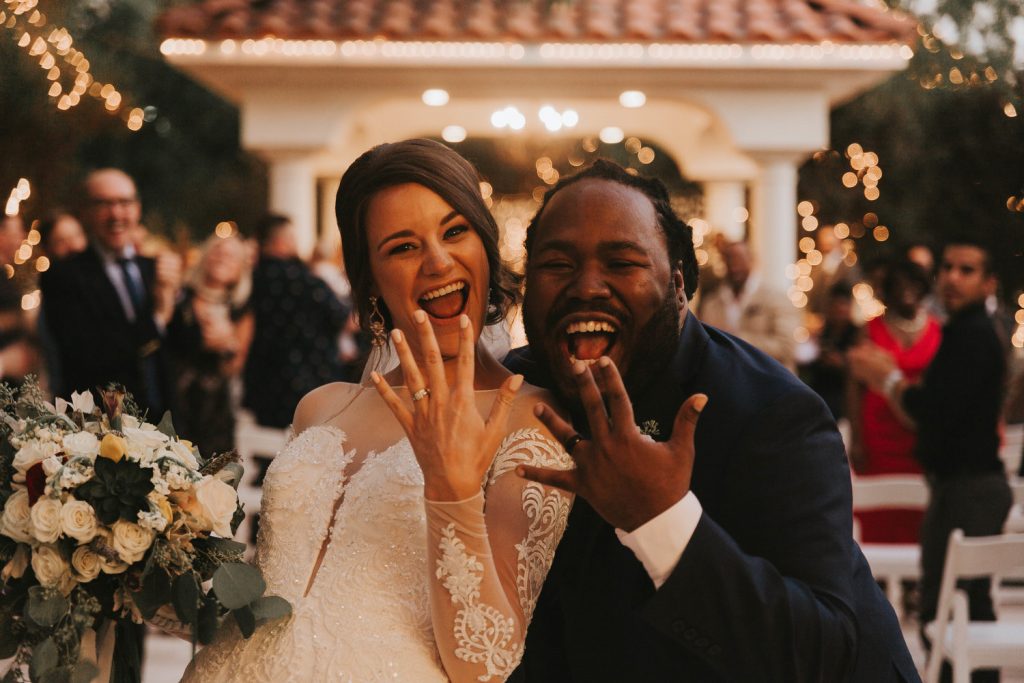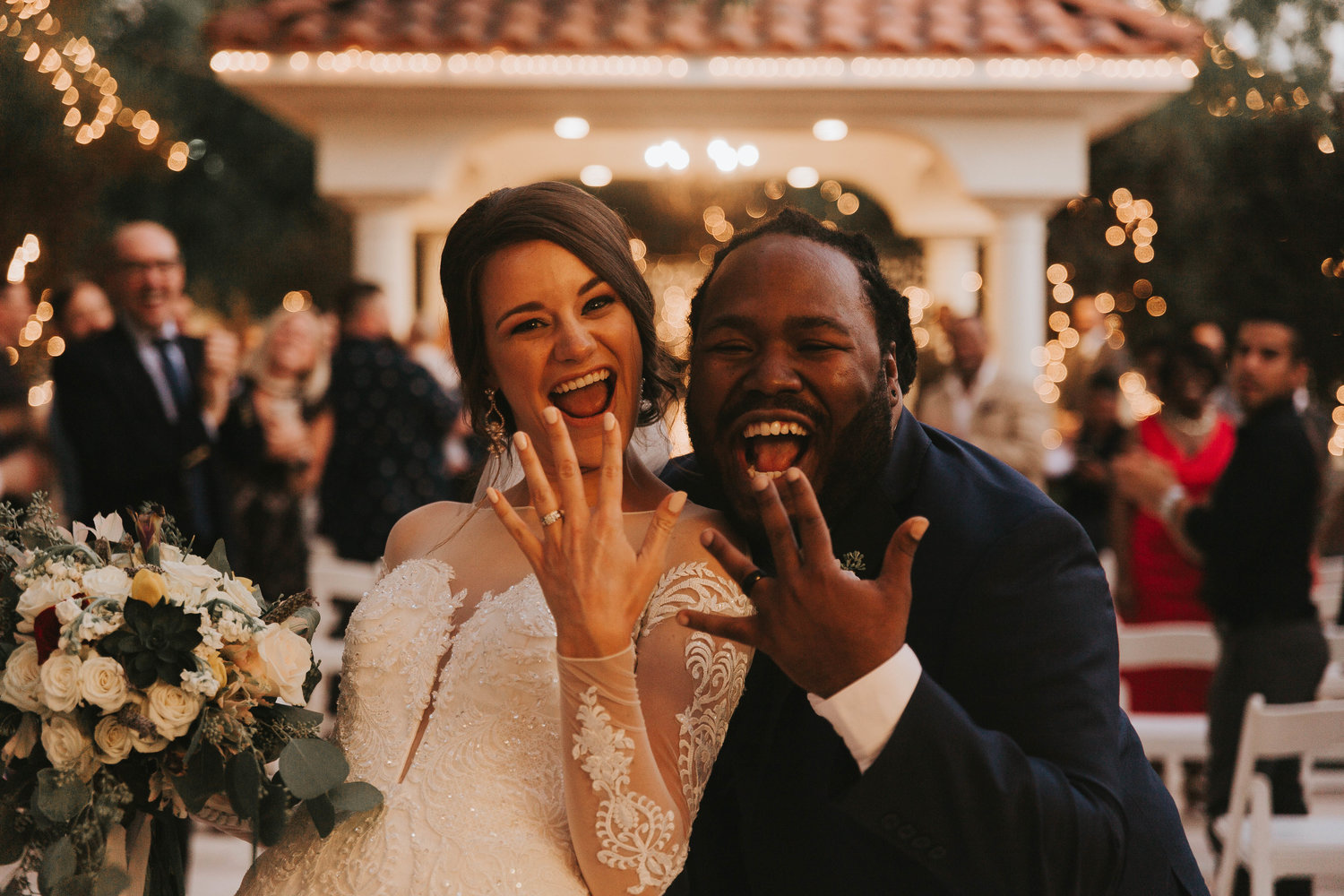After Marrying a US Citizen, How Long Does it take to get a Green Card?
After marrying a US citizen it can take anywhere between 3 and 24 months depending on the uniqueness of your case and the location of your field office. In some cities like LA, Brooklyn, and Dallas the process takes longer because the number of applicants is much higher.
Arun Meka who lives in Columbus, OH where said he has seen faster processing times compared to other cities. It took him 70 days to get his GC in hand after mailing my I-485 application after he got married to his wife who’s a US citizen.
It took them about 3 weeks to prepare the application, hire a lawyer, get all the evidence and paperwork together. It was a pretty smooth straightforward case.
There were no issues with his status and had no criminal record. A month after sending his application he received the interview invitation notice.
He had more than a month to prepare for the interview during which our lawyer conducted a couple of mock interviews.
He received approval the day after the interview and a week later my GC arrived in the mail.
How to Marry a U.S. Citizen

Congratulations on finding love and deciding to get married!
Now, because your loved one is a U.S. citizen, you’re probably wondering how to come live with them in the United States, and how the process works.
Although at first, the process will seem complicated and unfamiliar, because you are marrying or have married a U.S. citizen, you are not subject to the long wait times associated with other family visa categories, such as siblings.
However, as with all U.S immigration, sponsorship is required. In your case, your sponsor will be your U.S. spouse, who will need to apply for you to come and live with them in the United States.
You will both need to follow a series of steps in order for you to apply and receive a green card.
In this guide, we will be looking at:
1. How getting a green card through marriage works
2. Where should I get married?
3. Marrying in the U.S.
4. Marrying Abroad
5. Marriage fraud and visa fraud
How getting a green card through marriage works
To come and live in the United States permanently, you will need to apply for a marriage-based green card.
A marriage green card allows the spouse of a U.S. citizen or green card holder to live and work anywhere in the United States. A green card holder will then have “permanent resident” status until they apply for U.S. citizenship if they choose to do so.
To receive a green card, you must either be sponsored by a family member — in this case, your spouse — or an employer. There are usually caps or wait times associated with almost all green cards because of the high demand, but good news for you: no wait times or caps apply to married green cards!
This means that you can apply for a green card immediately when you marry your U.S. citizen spouse.
However, just because there are no wait times or caps does not mean the process will be smooth or quick. It can take months, sometimes years, for the whole process to be complete from start to finish, especially if your case is complex or you have children.
Also, you still require sponsorship from your spouse.
They will need to prove they pay their taxes and have sufficient income to support you, or have a sponsor that is willing to instead. This is called an Affidavit of Support and is a legal contract stating that the sponsor will support you if you cannot find income or employment in the United States.
Where should I get married?
For most couples, deciding where to get married can be challenging. Add in a foreign spouse and U.S. immigration laws, and the task becomes even harder.
If you decide to get married in the United States, you will be eligible to apply for Adjustment of Status (AOS). This is an internal process whereby you can stay with your spouse in the United States and possibly eventually work while your case is processed.
Importantly, you must be mindful of what visa you are on in the United States and the “90-day rule”. The rule is a USCIS guideline used to determine whether green card applicants applying from within the United States misled officials on their initial visa application to come to the United States.
It generally means you cannot apply for AOS within the first 90 days of your stay in the United States and if you do, your case will most likely be denied.
If you decide to get married abroad, you will have to go through Consular Processing (CP). Applicants living outside the United States must normally use consular processing to apply for a green card. Applying through consular processing means you’ll wait in your home country while your green card application is processed. That can take several months, but it’s generally much quicker than AOS, and you can continue your regular employment in the meantime.
Importantly, U.S. authorities only recognize civil marriages registered with the authorities of the country in which the marriage was celebrated. So, be sure to check that your marriage will be valid for U.S. immigration purposes.
Marrying in the United States

If you and your U.S. spouse are already both living in the United States, chances are you are on a temporary U.S. work or visitor visa. This will mean a transfer of the temporary visa to a green card through Adjustment of Status.
In order to start this process, you will need to get married and register your marriage with local officials.
Again, be mindful of the “90-day rule” — temporary visa holders who marry or apply for a green card within 90 days of entering the United States could find their green card applications denied and their current visas revoked. They may also find it hard to obtain a U.S. visa in the future.
During the green card application process, your U.S. citizen or green card holder spouse will be your “sponsor” and you will need to apply with them.
This is also referred to as “concurrent filing,” when the required paperwork — Form I-130 (officially called the “Petition for Alien Relative”) and Form I-485 (officially called the “Application for Adjustment of Status”) — are filed together. You will also need to file Form I-944 (officially called the “Declaration of Self-Sufficiency”).
All applications filed from within the United States are handled by U.S. Citizenship and Immigration Services (USCIS) and will require a biometrics appointment and in-person interview.
During the interview, you will be asked about your relationship and whether it is genuine. You must be truthful in your answers or your case will face challenges and possible denial.
There are no wait times or caps associated with spouses of U.S. citizens — unlike those of green card holders — and importantly, if you legally entered the United States but fell out of status, you can have it forgiven during the adjustment of status process.
Marrying Abroad
If you live outside the United States, you have 2 options: one is to get married outside of the United States and then apply for a green card through a U.S. embassy or consulate — known as consular processing.
You will need to file Form I-130 and then Form DS-160 (also called the Online Nonimmigrant Visa Application), followed by a medical exam and an interview at a U.S. embassy or consulate.
Although this can sometimes be a long process, this option does lead to a green card as soon as you arrive in the United States. So you can begin living and working here immediately!
The second option is to have your future spouse come to the United States on a K1 visa — also called a fiancé visa — which allows you to marry in the United States and then adjust your status to a green cardholder. This visa is obtained in advance from a U.S. embassy or consulate.
Before filing for a fiancé visa, a couple must typically have seen each other in person within the previous 2 years. The foreign partner applying for the fiancé visa must marry their U.S. citizen partner within 90 days of entering the United States, or they will be forced to leave the country.
After marrying in the United States, you will file Form I-485, which will require biometrics and possibly an interview. If the non-U.S. partner intends to seek employment or travel outside of the United States while the green card application is being processed, he or she must file for a work permit and a travel permit.
Marriage fraud and visa fraud
U.S. authorities only recognize civil marriages for immigration purposes, in which a marriage certificate has been issued by recognized authorities at a local or national level.
USCIS will not recognize (even if valid in the place it was celebrated): polygamous relationships; underage marriages; civil unions, domestic partnerships, or other such relationships not recognized as marriages in the place of celebration; proxy marriages where one person was not present during the ceremony; and relationships entered into for purely immigration reasons.
Remember that same-sex marriages are recognized by USCIS but must be documented by a marriage certificate from a country in which they are legal. This is because USCIS says the law of the place where the marriage was celebrated determines whether the marriage is legally valid for immigration purposes.
Finally, marriage fraud or the intent to fraudulently immigrate to the United States through marriage is taken very seriously by USCIS. They may require marriage bona fides — proof that your marriage is formed from a genuine relationship — either as part of your application or for your interview.
You may also face further requests for evidence or questioning during your interview if the officer believes you may not have a genuine marriage.






